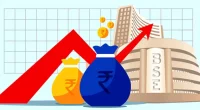The Reserve Bank of India (RBI) recently hiked the policy repo rate by 50 basis points (bps) to 5.9%, which had a direct impact on loans making them expensive.
So, what exactly are basis points or bps? These are a unit of measurement equal to 1/100th of a per cent, or 0.01%. Basis points are primarily referred to in the financial industry, and they tend to communicate small-scale movements in a way that is easy to communicate and comprehend.
Basis points or bps are quite often used to discuss changes to stocks, bonds, and interest rates.
For example, if the apex bank states that the 5% interest rate rises by 3%. Does this mean that the current interest rate is 8% or 5.15%? There is a need for additional clarification to understand this particular development in numbers.
On the other hand, if the central bank said that the 5% interest rate rises by 15 bps, there is clear communication as to the new interest rate being 5.15%.
So, the simple math that is required to remember is 1 bps is 0.01%. An easy method to convert bps into a per cent form is by simply taking the number of bps and multiplying by 0.0001. This will provide the per cent in decimal form. For instance, if an individual has to convert 95 bps into a per cent, simply multiply 95 by 0.0001. The answer is 0.0095, which is 0.95% (0.0095 x 100).
While providing details related to stocks, bonds, yields, and interest rates, one bps (0.01%) can represent hundreds, thousands, or millions of rupees.

Rajiv is an independent editorial consultant for the last decade. Prior to this, he worked as a full-time journalist associated with various prominent print media houses. In his spare time, he loves to paint on canvas.





